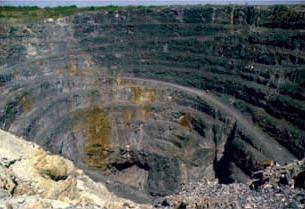One of the hats I wear is as an expert on the Internet a job that makes me an ordinary guy with a briefcase and a new pair of shoes fifty miles from home. My expertise is supposed to be in geology, but the way it has worked though is most of the questions are how to get a job in the mining or oil and gas industries. A job for which we are not the highly qualified expert, but we try.
How to Get a Job in the Mining Industry:
The first thing you have to realize is that the mining industry is a lot of hard work, and not only that it is a boom & bust industry that operates on the whim of the overall economy of industry as a whole. Mining is only one of the first steps on a long road until a finished product makes it to the final customer.
For the sake of this argument we will consider that you have a college education although some of the steps in this article apply to everyone.
· Have an applicable specialty – basket weaving does not apply.
· Get good grades – partying does not apply.
· Most colleges have a placement agency that acts usually as a lifetime employment agency for their graduates, use it!
· Most colleges also have career counselors that are often in your department, use them!
· Prepare a good resume or CV before you go job hunting.
· On the back pages of all trade journals there are usually help wanted ads, use them!
· Most big mining companies have training programs, use them!
· Most mining companies have web pages, read them if you are interested!
· Most mining companies on their web pages have a listing you can click on saying, “Careers” or something like that, read them!
· Practice the interview with a friend before you show-up for the real thing!
It takes a certain amount of patience to be a miner, and by the way if you have any questions you would like answered just leave them in the comments box at the bottom of this blog.
Mark Twain once defined a mine as a deep hole in the ground with a damned fool at the bottom, and a damned liar at the top – Maybe he got it right!


